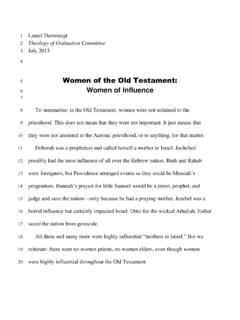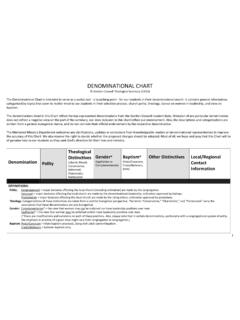Transcription of A Brief History of the Seventh-day Adventist Church
1 A Brief History of the Seventh-day Adventist Church Organized in 1863, the Seventh-day Adventist Church has its doctrinal roots in the Advent Awakening movement of the 1840s. Hundreds of thousands of Christians became convinced from their study of Bible prophecy that Christ would soon return. This re-awakening of a neglected Biblical belief occurred in many countries, with a major focus in North America. After the great disappointment of their hopes in 1844, these advent believers . broke up into a number of different groups. One group, studying their Bibles for increased understanding, recognized the Seventh-day Sabbath (Saturday) as the day of worship. This group, which included Ellen and James White and Joseph Bates, became the nucleus of the Church congregations that chose the name Seventh-day Adventist Church and organized in Battle Creek, Michigan, with 125 churches and 3,500 members.
2 Ellen White s ministry under God's special guidance greatly influenced the development of the Adventist Church . Her counsels and messages to believers and Church leaders shaped the form and progress of the Church , while its beliefs have remained totally Bible-based. Other early Adventists of note include John Harvey Kellogg, inventor of the cornflake developed by his brother Will and pioneer of the Battle Creek Sanitarium;. Joseph Bates, retired sea captain and first leader of an Adventist administration;. Uriah Smith, prolific author and inventor, and editor of the Church 's paper for almost 50 years. Adventist missionaries began work outside of North America in 1864, and ten years later J. N. Andrews was sent to Switzerland as the denomination's first official missionary.
3 In 1890, an Adventist minister began working in Russia, while in 1894. Church operations commenced in Africa (Ghana and South Africa). Missionaries also arrived in South America in 1894, and in Japan in 1896. The Church now operates in 204 countries worldwide. Growth from the early days has been dramatic. From the small group meeting in 1846 and the organization of the Church with 3,500 believers, Seventh-day Adventists now number 14 million worldwide. For more information about the Seventh-day Adventist Church , visit its official Web site: -end.







